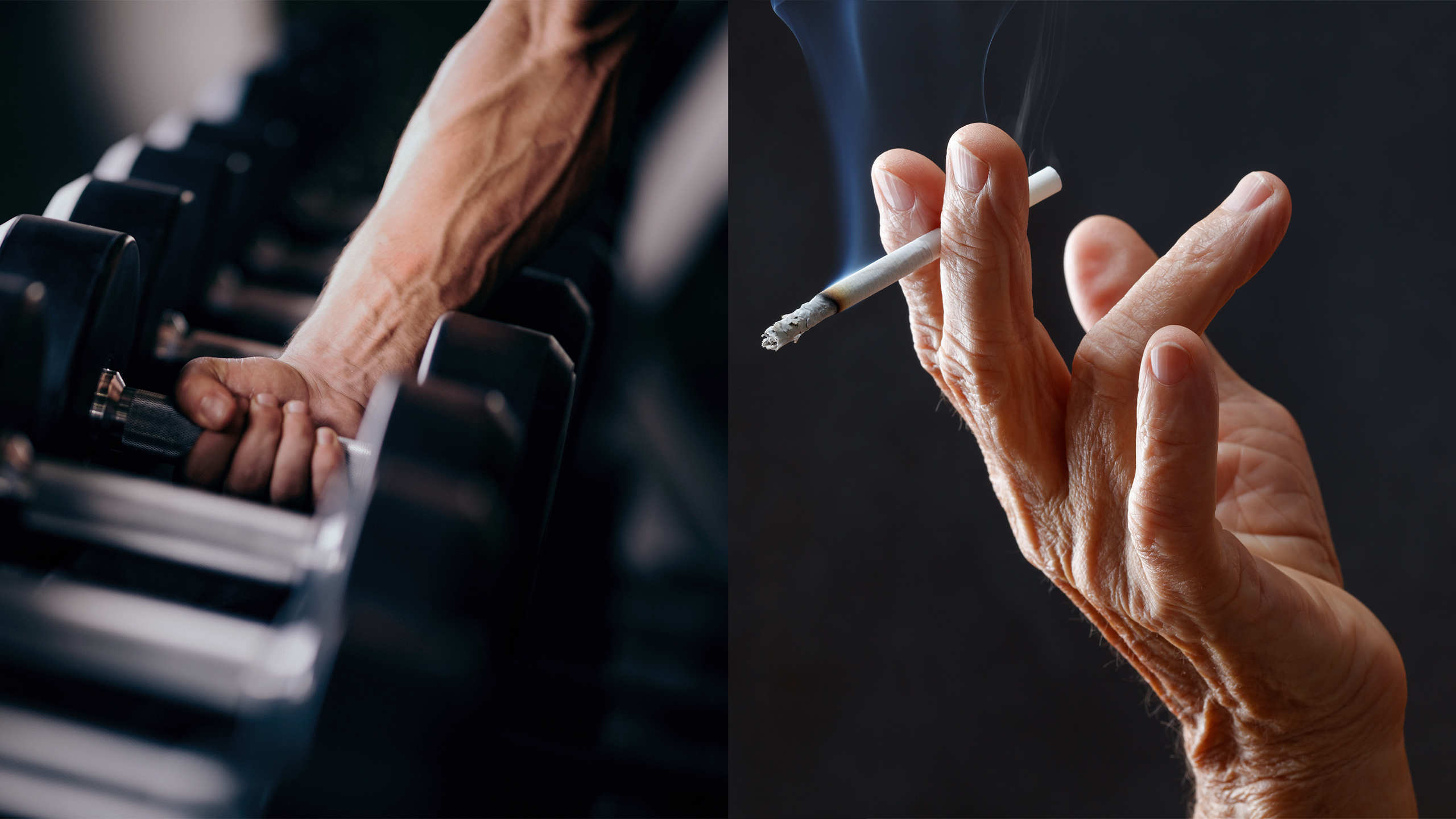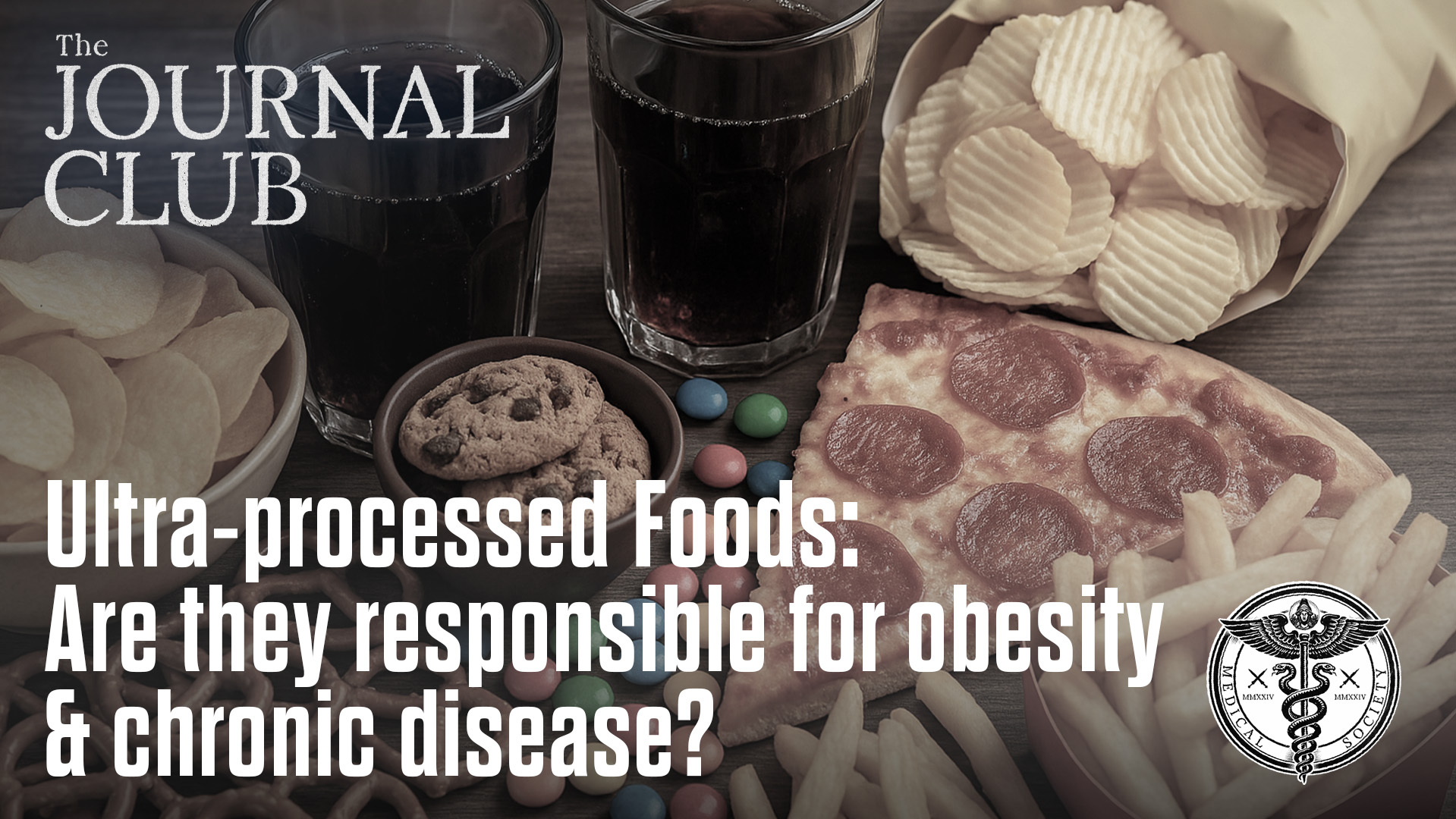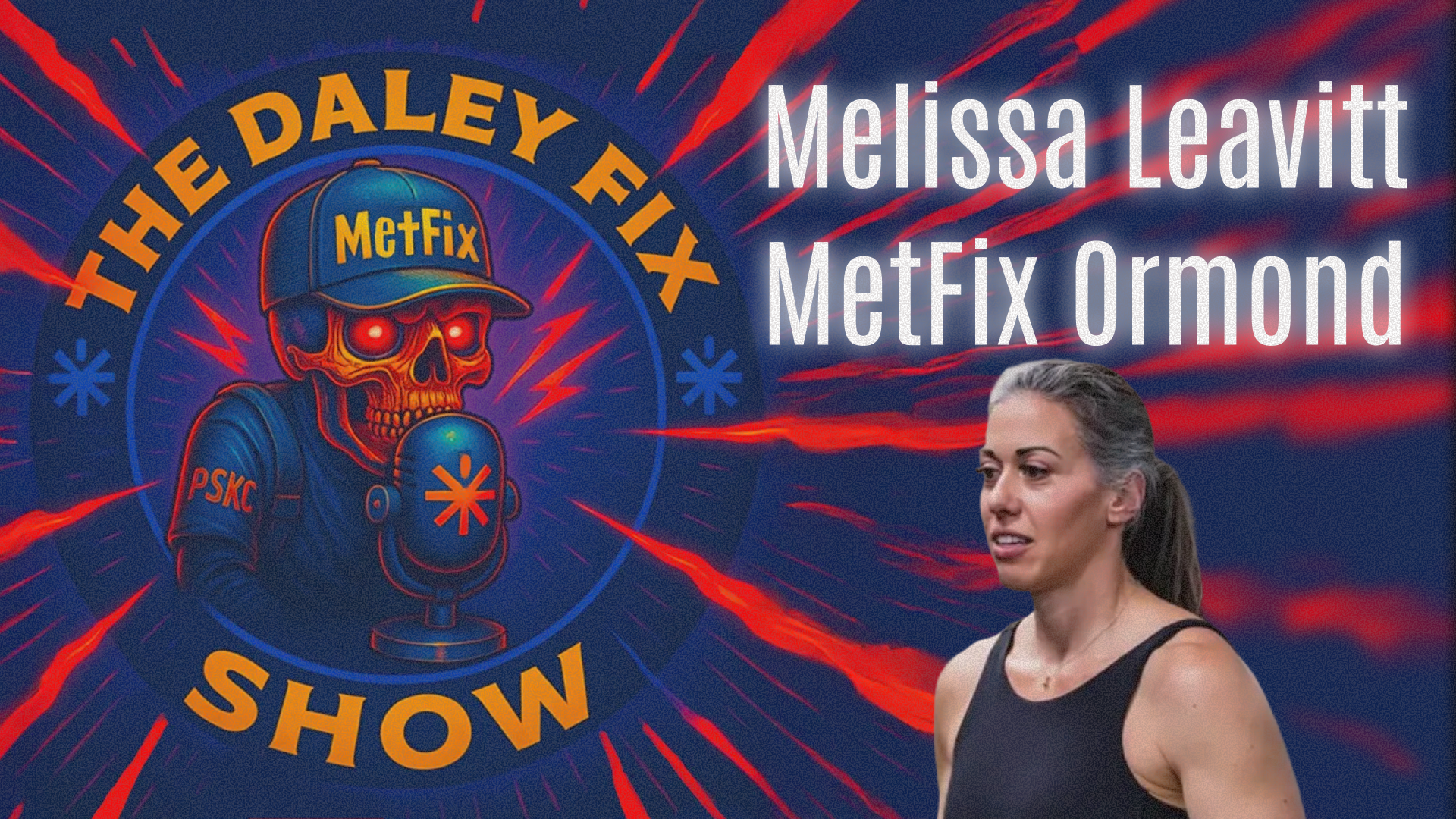By Dr. Mary Dan Eades
How do you measure age? A 2022 study done by Peterson and colleagues at the University of Michigan aimed to answer the question scientifically by correlating biomarkers of aging with hand grip strength (HGS) with the supposition that HGS could become an easily measured surrogate for aging well or poorly. What did they find?
Chronological age is of course measured by the calendar and the number of candles on your birthday cake. If you were born 60 years ago today, your chronological age is 60, and you’ll hope not to struggle to blow out all those candles. But age is just a number. And it doesn’t tell us anything about health status. There are 40-year-olds who are physical trainwrecks and 75-year-olds who can deadlift two-and-a-half times their body weight. What accounts for such differences?
Biological age, on the other hand, is determined by biological markers that research suggests1 correlates with aging well or poorly and the odds of dying. Perhaps you lit 60 candles on your birthday cake, but if your age as measured in terms of biological markers is 50, that puts your odds of dying on par with an average person of your gender who is only 50 years old. Substantially less than it is at 60. But how do we measure biological age?
Biological age, on the other hand, is determined by biological markers that research suggests correlates with aging well or poorly and the odds of dying
In the past few decades, biological age has been estimated using a variety of biomarkers – telomere length, DNA-methylation, proteomics, metabolomics, glycomics, wearable sensor data and blood-based, clinical biomarkers.
One of the ways researchers measure biological age is assessing the degree of DNA methylation. Over time, the DNA, the genetic code in all mammalian cells, becomes methylated (i.e. have a methyl group inserted at various critical sites along the genetic strands). The more methylation, the more accelerated the aging of the organism. Methylation is an epigenetic process by which genes are silenced—i.e., their expression is turned up or down, or turned off completely. It’s a fairly complex chemical ballet in which an organic molecule called a methyl group (chemical structure CH3) is fitted onto specific DNA areas (called CpG clusters) near gene promoter regions to quiet activity that we need to be muted or silenced for health. It’s the process that silences all the gene expressions of, say, liver cell functions in a brain cell or a muscle cell. The DNA to code for all those liver processes is there, but it’s simply turned off in anything that’s not a liver cell by methylation.
The human genome can be viewed as something of a script or a template, a starting point subject to change. Because every cell in a human body came from one original fertilized egg cell, it has one DNA template that is passed on as that one cell divides again and again to become the 70 trillion or so cells that make up a human. Some differentiate to become liver cells, some brain cells, some muscle cells, etc., yet they all have the same exact genetic template. The differences in what the genes express in a given cell—how they develop, how they look, what they do—is determined by these epigenetic modifiers, one of which is methylation (and its opposite, de-methylation). But the process isn’t a given; it can be influenced by external factors, such as diet, hormones, stress, drugs, lifestyle, environmental toxins, and more.
The DNA methylation process is vitally important to cellular health and to keep our genome in good working order. However, DNA methylation works less and less well as we age (or perhaps more correctly put, we age as it works less and less well). And the progressive weakening of the system correlates with the onset of disabilities commonly associated with aging: sarcopenia, frailty, dementia, the development of cancers, and other diseases of senescence.
To better understand how all this works, imagine two identical twins. They both have exactly the same DNA. They look alike as kids, but as they grow older they begin to differentiate. One may gain more weight or develop diabetes or heart disease or schizophrenia while the other doesn’t. How is that possible since they have exactly the same genetics? You’d think they should age in the same way. But they don’t.
Why not?
Because DNA doesn’t control everything. All the same genes are there in both twins, but external forces can end up turning certain genes on and others off.
For example, If one twin consumes a proper diet while the other doesn’t, that external force—the biological changes brought about by the difference in diets—can cause certain genes to be turned off in one twin and left on in the other. If one twin exercises regularly and one twin doesn’t, certain genes turn on and off. If one twin smokes and the other doesn’t… etc, etc. Lifestyle choices impact (and alter) the expression of the basic DNA template. With the differences in gene expression creating the attendant changes of weight, blood sugar, insulin resistance, strength, and mental stability that alters the physical reality of two identical twins.
Since DNA methylation is one way in which genes are turned on and turned off, it has been used as a biomarker for aging. Average people of a certain age are expected to have a characteristic methylation pattern consistent with that age. People who smoke, for example, age prematurely and their DNA methylation pattern is one typical of people of older chronological age—in other words while they may be only 50 by the calendar, but their methylation pattern (their biologic age) might look more like a person of 60.
People who smoke, for example, age prematurely and their DNA methylation pattern is one typical of people of older chronological age—in other words while they may be only 50 by the calendar, but their methylation pattern (their biologic age) might look more like a person of 60.
The 2022 Michigan study suggests indirectly that one of the external factors modifying methylation could be exercise, or more specifically grip strength. The press report on this study says:
“Researchers at Michigan Medicine modeled the relationship between biological age and grip strength of 1,274 middle aged and older adults using three ‘age acceleration clocks’ based on DNA methylation, a process that provides a molecular biomarker and estimator of the pace of aging. The clocks were originally modeled from various studies examining diabetes, cardiovascular disease, cancer, physical disability, Alzheimer’s disease, inflammation, and early mortality.”
The lead author of the study, Dr. Mark Peterson, explained.
“We’ve known that muscular strength is a predictor of longevity, and that weakness is a powerful indicator of disease and mortality, but, for the first time, we have found strong evidence of a biological link between muscle weakness and actual acceleration in biological age.
“This suggests that if you maintain your muscle strength across the lifespan, you may be able to protect against many common age-related diseases. We know that smoking, for example, can be a powerful predictor of disease and mortality, but now we know that muscle weakness could be the new smoking.”
Note first that the press statement by Peterson is full of wobbly qualifiers: ‘suggests,’ ‘may be able,’ ‘could be.’ But also includes the statement ‘we have found strong evidence’ and ends with the strong pronouncement ‘we now know that muscle weakness could be the new smoking.’ Throughout the body of the article, however, the authors make the point that correlation isn’t causality, yet in the press release they ‘know’ and have ‘found strong evidence.’ A classic application of Schrödinger’s Inference, where the authors caution against causal interpretation while they themselves offer causal interpretation2.
Do we know hand strength confers longevity from this study? My own confirmation bias believes this statement to be true empirically, but is their evidence strong?
The Michigan study is observational, thus the weakest sort of evidence; it does offer a suggested link, a correlation, and thus some avenues for further investigation, but the difficulty in doing something more scientifically definitive to answer the question is always that studies measuring longevity directly take a very long time.
For example, here, you would need to age and sex crossmatch two groups of adults (or kids) and randomize them to engage in strength building exercise or not, keeping all other variables, such as diet and smoking and education and stressors and (fill in the blank from a long list of possible variables) the same. Then measure the differences in strength over time and the appearance (or not) of diseases as they age, then watch the groups until they die and see whether a lifestyle that made them stronger also had predictive value that it made them live longer as well. It’s just not something that could realistically be done. So you have to use a surrogate, like mice. Or a marker, like DNA methylation. Further studies on the latter may tell us whether the marker has any predictive strength.
When the researchers at the University of Michigan compared the DNA methylation patterns of subjects with more powerful handgrip strength to those of the same chronological age but with a weaker handgrip, they discovered that those with stronger grip had the biological marker pattern of people of a younger chronological age—i.e., less methylation. (Cause? We don’t know from the study.) The press picked up the sizzling headline: Handgrip strength predictive of longevity. And sent a lot of middle aged men busily to work on their grip strength. But is there anything here besides lots of correlations? Not really.
Grip strength is a handy proxy for lean body mass and overall muscle strength in both kids3 and adults. And overall strength is a surrogate biological marker for health and greater longevity4, 5, 6. Moreover, it’s easier to measure than other forms of strength and cheaper than a panel of age-acceleration-clock measurements.
And per the Michigan study, handgrip strength correlates inversely with DNA methylation age acceleration7 thus with supposed biological age; the stronger the grip, the slower the aging. Or put another way, perhaps the stronger your grip, the younger you are biologically. Grip strength has been shown to correlate inversely with risk for dementia8 as well. So the stronger the grip, the sharper the brain? Lots of correlations, little hard evidence.
The science here isn’t so much broken as it is weak and open to misinterpretation.
One worry with the Michigan study is as per Campbell’s Law: the unintended consequence of using quantitative measures as the sole basis for decision making and the perverse incentive that can arise from it. Some people apparently believed, following the press reports on this study, that by merely increasing their handgrip strength, they could decrease their biological age. Of course, that isn’t the case. You can’t game the system by sitting around all day watching TV, munching cheese puffs, and squeezing one of those grip-strengthener devices and hope to become biologically younger for your efforts.
Grip strength mirrors overall strength and lean mass, and it’s in the context of a bigger, stronger lean body mass that grip strength would matter as a predictor. And perhaps a pretty good one, absent gaming the system. But not just as the result itself, a stronger grip, but because of all the biologic (epigenetic) changes that occur because of what you do—body wide—to achieve that stronger grip and that bigger, stronger lean body mass. None of that was addressed in the Michigan study.
So what does this study tell us? Probably nothing we didn’t already know. I think we can all agree that strength is a good thing, especially as we age. And based on the Michigan work, what you do to achieve it may influence your DNA methylation in a good way. Or at least be correlated with it as a marker of aging.
References:
- Bortz J et al, Biological age estimation using circulating blood biomarkers, Communications Biology volume 6, Article number: 1089 (2023)
- Tennant and Murray, The quest for timely insights into Covid-19 should not come at the cost of scientific rigor. Epidemiology 32 (1):p e2 January 2021.
- Gerber, M et al, Is grip strength linked to body composition and cardiovascular risk markers in primary schoolchildren? Cross-sectional data from three African countries, BMJ Open 2022;12:e052326. doi: 10.1136/bmjopen-2021-052326.
- Srikanthan, P and Karlamangla AS, Muscle Mass Index as a Predictor of Longevity in Older Adults, Am J Med. 2014 Jun; 127(6): 547–553. doi: 10.1016/j.amjmed.2014.02.007
- Peterson MD, Zhang P, Choksi P, Markides KS, al Snih S. Muscle weakness thresholds for prediction of diabetes in adults. Sports Med 2016; 46: 619–628
- García-Hermoso A, Cavero-Redondo I, Ramírez-Vélez R, Ruiz JR, Ortega FB, Lee DC, et al. Muscular strength as a predictor of all-cause mortality in an apparently healthy population: A systematic review and meta-analysis of data from approximately 2 million men and women. Arch Phys Med Rehabil 2018; 99: 2100–2113.e5.
- Rantanen, Taina et al. (1999). Midlife Hand Grip Strength as a Predictor of Old Age Disability. JAMA, 281(6), 558–. doi:10.1001/jama.281.6.558
- Boyle PA, Buchman AS, Wilson RS, Leurgans SE, Bennett DA. Association of muscle strength with the risk of Alzheimer disease and the rate of cognitive decline in community-dwelling older persons. Arch Neurol 2009; 66: 1339–1344.
Related:
Physician, author, blogger, and lecturer on the art and science of low-carbohydrate nutrition, using food as a remedy for the diseases of modern civilization: obesity, diabetes, heart disease, and the myriad disorders of the insulin resistance/metabolic syndrome complex.
Support the Broken Science Initiative.
Subscribe today →
recent posts
Medical Society Webinar with David Wiss



